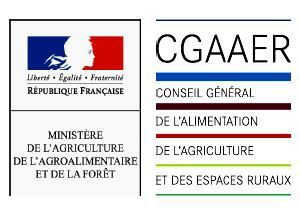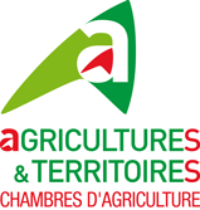Document type Report of the General Council for Food, Agriculture and Rural Areas (CGAAER)
Authors: Bruno Gadoud, Philippe Seinger
Preview: More than 80% of broiler rabbit production takes place in Asia with 10% in Western Europe. France is the 4th largest producer in the world and the 3rd largest in Europe.
More than 90% of French production happens on professional farms. Highly structured and technical, it has its own interprofessional grouping (upstream actors, producers and slaughterers) which has a comprehensive industry plan for 2018-2022. There is some organic production but this represents very few farms and very low production levels. The rabbit is a particularly prolific animal but is very prone to diseases with high mortality rates, including HDV. The use of vaccination and biosecurity has made it possible to overcome the most recent animal epidemics. There is widespread engagement in reducing the use of medicines and the preventive use of antibiotics in particular. Production and consumption have been decreasing steadily for several decades. There is therefore a strong needl to revive the sector and to recruit younger consumers of rabbit meat.
Like other types of livestock production, rabbit farming must navigate the forthcoming ban on cage farming. Alternative housing solutions already exist for the fattening of young rabbits, but research on the needs of breeding animals, especially female rabbits, must be continued.
First, the investigatory committee recommends the creation or alteration of housing for fattening rabbits to form collective pens, which are better for animal welfare, with the short-term goal that 30% of products on the market should have been farmed using alternative housing. Other farmers will be able to convert their housing in a second phase. Once this process, which has already begun, has reached this threshold, it will be possible to roll out a wider and more varied marketing campaign to promote this white meat of good nutritional quality.
It will then be necessary to rely on the help of willing slaughterer-processors and any organisations or bodies prepared to join them, such as the Poultry Interprofession, distributors, local authorities and the State.
The cost of this move to alternative housing to replace cages, which could take a long time to claw back, should be "shared" between those working in the sector, producers, processors and
distributors, without forgetting the possibility of funding from Europe. The EGALIM law provides the framework necessary to formalise this cost sharing contractually.
Success in replacing the generation of farmers who will give up their actvities in the medium term will depend on the ability to attract young farmers, who will need guidance, help and training in the management of these rabbit-farming businesses.
Rabbit farming has many advantages on offer, such as established technical procedures, short production cycles, easy-to-handle animals, standard dimensions, low environmental impact and lack of competition with the production of human foodstuffs.
To attract the consumers and catering professionals needed to maintain a satisfactory level of demand, the profession will have to move towards products that are easier to prepare, along with simple and quick recipes for new consumers who are well-informed and feel confident that their diet is healthy and diversified. Prices must nevertheless be kept to ranges that fit with household budgets.
The 7 recommendations made in this report are addressed respectively to the interprofessional group, farmers, producer groups, slaughterers, processors, to distributors and/or public authorities. They are intended to support the changes that are necessary for the broiler rabbit industry to have a future.
List of recommendations
R1. For the interprofessional group, and more particularly for slaughterers and producer groups: the sector must resolutely engage in proven alternative solutions for housing rabbits for fattening (shared pens and winter gardens for example). Farmers must continue to be supported, technically and financially by slaughterers, in the conversion, extension, rebuilding or even the creation of farms with alternative housing. The short-term target of 30% should be set (exact dates to be specified), for products on the market from farms with alternative housing for fattening, because this is a necessary preliminary step to boost consumption and establish new farmers.
R2. For the interprofessional group: it is necessary either to open up membership of the interprofessional group (CLIPP) to supermarkets (through the creation of a "distribution college") or to develop a dialogue with the supermarkets through the current liaison committee to build a shared vision between committed parties and to co-create actions to promote rabbit meat.
R3. For manufacturers: improve work with local authorities and communication with school meal providers to develop a market share in mass catering.
R4. For professionals in the French rabbit industry: continue to work closely with rabbit industry professionals in other European countries.
R5. For producers, processors and supermarkets: develop a system of contracts between farmers, slaughterers and distributors within the framework of the EGALIM 2 Law, based on a broad set of indicators to be assessed and accepted by all stakeholders to define criteria for price changes.
R6. For the DGER: encourage the DRAAF to identify an advisory organisation for each rabbit farming region and to open up businesses to raise public awareness of the sector so as to encourage new generations of farmers.
R7. For the DGPE: ensure at the European level that rabbit farms are included in the financial support measures to be provided for in the forthcoming European regulations, timetabled for 2023, for the conversion of current farm buildings and their equipment into housing that complies with the new European standards for animal welfare.






